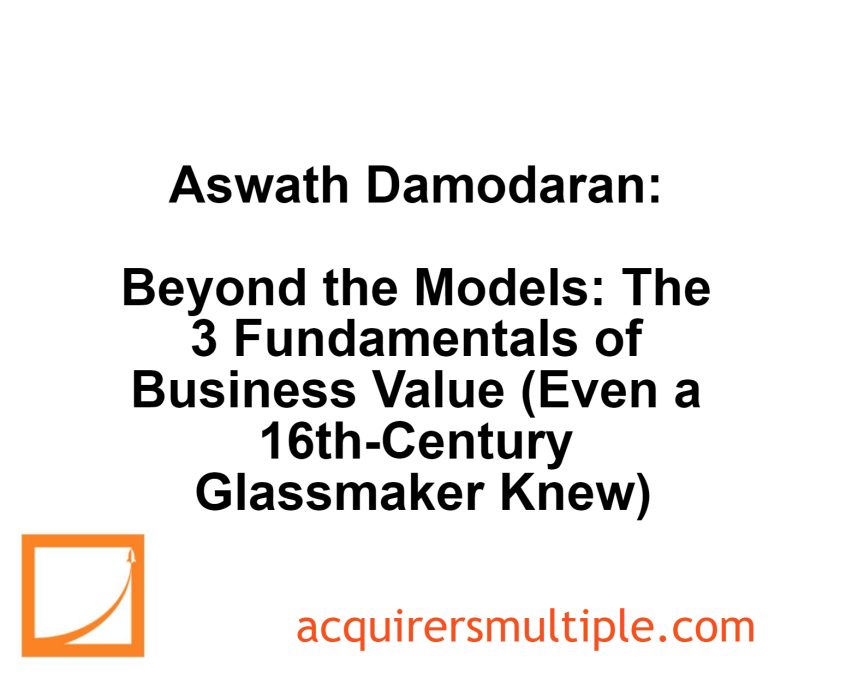In this interview with Aikya Connect, Aswath Damodaran argues that even though the tools and data for analyzing businesses have evolved over time, the core drivers of value haven’t changed. He uses the example of a 16th-century Venetian glassmaker to illustrate how the fundamental questions for determining a business’s worth boil down to three things:
- Cash Flow: How much money is coming in and going out?
- Growth: Are sales and profits increasing?
- Risk: How stable are these cash flows over time?
Damodaran believes that while we now have more sophisticated tools and data to estimate these figures, we can sometimes get lost in the details and lose sight of the big picture. He criticizes complex financial models with hundreds of line items that obscure the underlying cash flows. Similarly, he warns against focusing on financial models and chasing growth for its own sake, instead of understanding the sustainable drivers of growth.
In essence, Damodaran’s message is that despite the evolution of valuation techniques, understanding the fundamentals of cash flow, growth, and risk remains essential for assessing the true value of a business.
Here are some additional key takeaways:
- Fundamentals matter: Regardless of the era or tools available, understanding the core drivers of value is crucial for any business valuation
- Beware of data overload: Don’t let complex models and excessive data distract you from the simple truths about a business’s cash flow, growth, and risk
- Focus on sustainable growth: Don’t chase growth for its own sake, but understand the drivers of long-term, sustainable growth for a business
Here’s an excerpt from the interview:
Damodaran: You know what value is value. That Venetian glassmaker in the 1500’s who sold his business. Let’s say you were playing the road.
It’s the 1500s. You’re trying to buy a glassmaker’s business. You know the questions you’d ask him is how much cash did you bring in? How much cash do you take out?
In fact you didn’t have all the these distortions created made by accounting statements. Cash in, cash out.
It’s cash flows you probably wanted to know hey more people buying your stuff than they did before? Growth.
And the third is, what happens to your cash flows over time?
Do they’re pretty stable cash flows.
Growth and risk they’re the constants that have always driven value.
What’s different now is we have more ammunition, more data, more tools to try to estimate those numbers, but in an ironic way the more data we have the more we lose sight of fundamentals.
Those of you have seen banking valuation models know exactly what I’m talking about. To get to the cash flows you have 500 line items. You’ve completely lost the script.
You’re no longer thinking about cash flows. You’re thinking about financial modelling when you think about growth.
You’re again losing the script about focusing on growth for the sake of growth.
The drivers of value have always been there. The tools and the data we have keep shifting on us and it’s not that things get better, in fact I think they just get different.
You can watch the entire discussion here:
For all the latest news and podcasts, join our free newsletter here.
Don’t forget to check out our FREE Large Cap 1000 – Stock Screener, here at The Acquirer’s Multiple:



